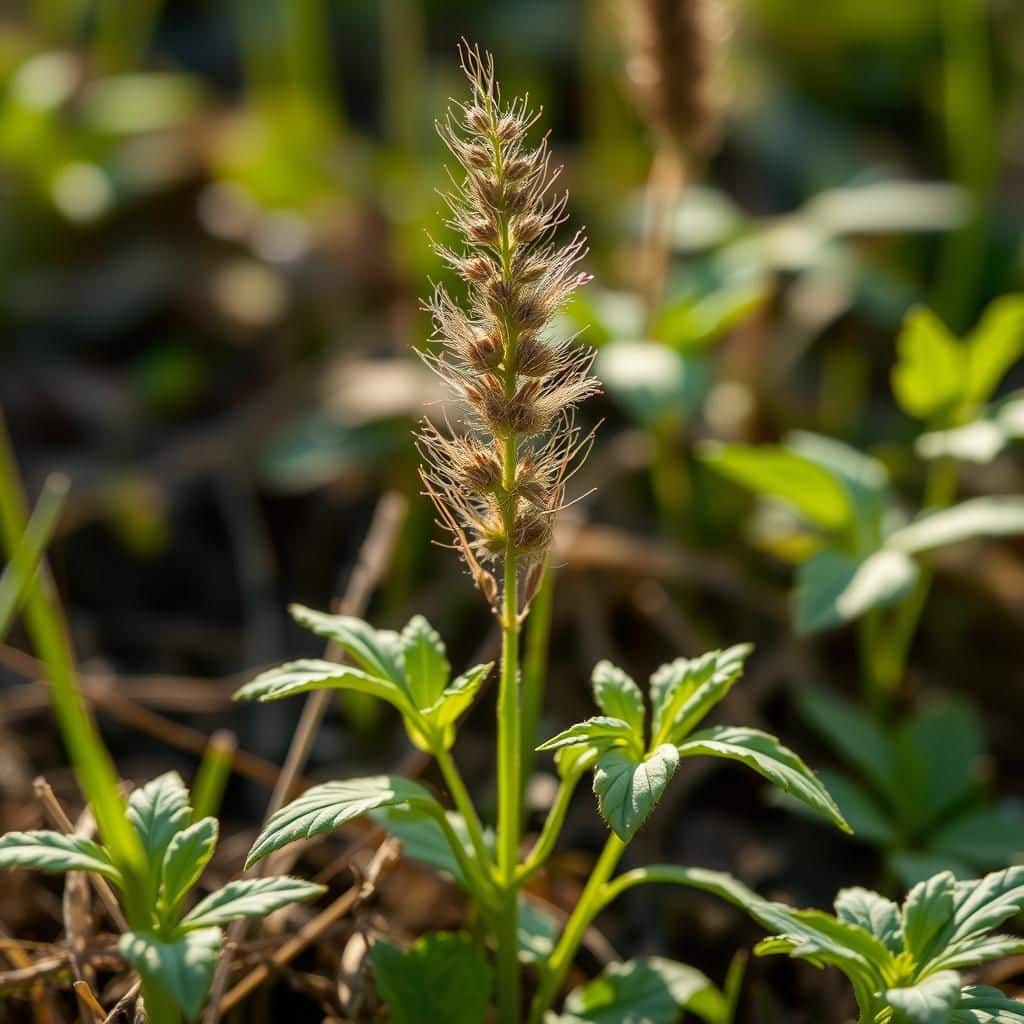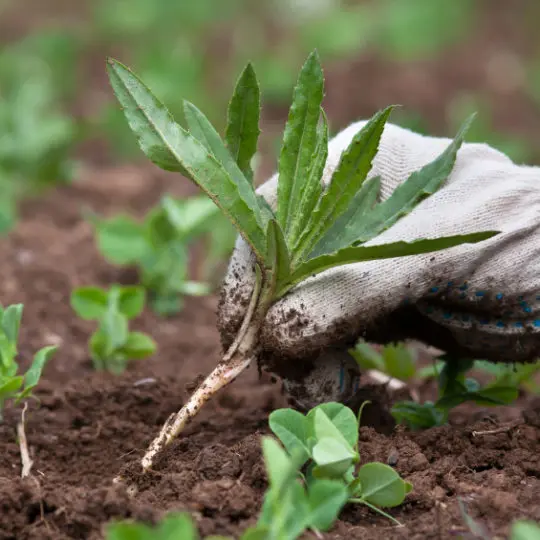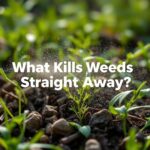How Quickly Do Weeds Grow Back? Understanding Growth Rates and Control Methods

Weeds are a persistent challenge for gardeners and landowners alike, often returning with surprising speed after removal. Understanding the growth rates of various weed species is crucial for effective management and prevention strategies. This article delves into the science behind weed growth, exploring factors such as climate, soil conditions, and root systems that contribute to their rapid resurgence. Additionally, we will examine various control methods, both chemical and organic, to help mitigate the impact of these unwanted plants. By gaining insights into how quickly weeds grow back, we can develop more effective strategies to keep our gardens thriving.
How Quickly Do Weeds Grow Back?
The rate at which weeds regrow depends on several factors, including the species of the weed, environmental conditions, and the methods used for control. Generally, some annual weeds can germinate, grow, and produce seeds within a period of a few weeks, while perennial weeds, which often have extensive root systems, can resprout quite rapidly after being cut or pulled. Environmental conditions such as moisture, light, and temperature also play a crucial role in determining how fast weeds return once they are removed. In optimal conditions, homeowners can see some weed species returning within as little as seven days after being cut.
Factors Affecting Weed Growth Rate
The growth rate of weeds is influenced by various factors, including soil quality, nutrient availability, and climate conditions. Weeds that thrive in nutrient-rich soil often grow faster and more aggressively. Additionally, weeds that are adapted to specific climatic conditions will grow more rapidly in their preferred environments. For instance, warm-season weeds tend to flourish during summer months, while cool-season weeds will take advantage of the spring or fall temperatures.
Types of Weeds and Their Growth Rates
Different types of weeds exhibit varying growth rates. Annual weeds, such as crabgrass, typically complete their life cycle in one year, often germinating and maturing within weeks. In contrast, perennial weeds, like dandelions, can survive for many years due to their underground root systems, and can regrow quickly after being disturbed. Understanding the specific type of weed can help in anticipating how quickly they might return after removal.
Environmental Conditions Impacting Regrowth
Environmental conditions have a significant impact on the regrowth of weeds. Factors such as precipitation, sunlight, and soil temperature can accelerate or inhibit growth. For example, adequate moisture can enhance growth rates, enabling weeds to sprout quickly after uprooting. Conversely, if the soil is dry or the temperatures are too extreme, the growth may slow down, giving gardeners a temporary reprieve from weed interference.
Control Methods and Their Effectiveness
The methods employed to control weeds play a crucial role in determining how quickly they grow back. Techniques such as manual removal, mulching, and the use of herbicides can be effective in stopping weed regrowth, though the effectiveness varies with the method used. For example, although pulling weeds can provide immediate results, it may not eliminate the root systems, allowing for faster regrowth in the future. In contrast, applying the right herbicide can effectively target and kill weed roots, leading to longer periods without regrowth.
When to Expect Weed Regrowth
The timeframe for weed regrowth is variable. After applying control measures, homeowners might expect to see weeds re-emerging within 7 to 14 days for annual species, while perennials might take slightly longer, depending on the depth of their root systems. Understanding this timeline can help gardeners plan their approach to weed management effectively, ensuring they are prepared for periodic maintenance and control throughout the growing season.
| Weed Type | Growth Rate (Days) | Life Cycle |
|---|---|---|
| Annual Weeds | 7-14 | 1 Year |
| Perennial Weeds | 14+ | Multiple Years |
Do weeds grow back if you pull them out?

Weeds can indeed grow back after being pulled out. The process of pulling weeds is often not sufficient for complete eradication due to several factors:
1. Root System: Many weeds have extensive root systems that can remain in the soil even after the visible parts are removed. If even a small piece of the root is left behind, it can regrow quickly.
2. Regeneration: Some weeds are particularly resilient. They can regenerate from root fragments or underground storage organs, such as bulbs or tubers.
3. Seed Production: Weeds often produce a large number of seeds that can remain dormant in the soil for years. Even if the parent plant is removed, new weeds can sprout from these seeds when conditions are favorable.
4. Environmental Factors: Conditions such as moisture and nutrients in the soil can encourage weed growth. If these conditions are not managed, pulling weeds alone will not prevent their return.
5. Timing of Weeding: The timing and method of weeding play crucial roles in whether weeds will return. For instance, pulling them during their growth phase, before they set seed, is more effective in controlling their spread.
See also:
The Importance of Root Removal
Removing both the visible parts and the roots of weeds is essential for preventing regrowth. This can be challenging as many weeds have deep and sprawling roots.
- Deep Roots: Some weeds, like dandelions, have long taproots that need to be fully extracted to prevent regrowth.
- Shallow Roots: Others may have shallow root systems but can still regrow if any part is left in the soil.
- Tools for Effectiveness: Using the right tools, such as a weeding fork or hoe, can help remove the entire root system more effectively.
The Role of Weed Seeds
Weeds can produce thousands of seeds that can lie dormant in the soil for years. This makes it crucial to consider seed management when dealing with weeds.
- Dormancy: Many weed seeds can survive unfavorable conditions in a dormant state, waiting for the right environment to germinate.
- Seed Bank: The accumulation of weed seeds in the soil creates a seed bank, which can lead to a constant supply of new weeds.
- Seed Dispersal: Weeds can spread their seeds through wind, water, animals, or human activity, leading to new infestations.
How Environmental Conditions Affect Weeds
Environmental factors play a significant role in both the growth and regrowth of weeds.
- Moisture Levels: Adequate moisture helps weeds to thrive, so monitoring watering practices is essential.
- Soil Nutrients: Fertile soil often encourages rapid weed growth; managing soil nutrients can help control this.
- Sunlight: Weeds typically require a lot of sunlight; shaded areas may deter their growth, while sunny spots encourage it.
Best Practices for Weed Management
To effectively manage weeds and prevent them from regrowing, several strategies can be employed.
- Regular Maintenance: Frequent weeding and monitoring of the area can help catch and remove young weeds before they spread.
- Mulching: Applying mulch can suppress weed growth by blocking sunlight and retaining soil moisture.
- Proper Timing: Weeding during specific growth phases (e.g., before seed formation) can help reduce future infestations.
Alternatives to Pulling Weeds
Pulling weeds is not the only method for managing them. Several alternatives can be effective at preventing regrowth.
- Herbicides: Chemical solutions can be used, but they must be applied carefully to minimize harm to surrounding desirable plants.
- Boiling Water: Pouring boiling water on weeds can kill them without affecting the surrounding environment significantly.
- Vinegar Spray: A natural alternative, vinegar can kill weeds effectively but may require multiple applications for persistent varieties.
How quickly do weeds regrow?

Weeds can be quite persistent and resilient, characterized by their rapid growth and ability to re-establish themselves after removal. The rate at which weeds regrow varies significantly depending on several factors, including species, environmental conditions, and the methods of removal. Typically, many common weeds can regrow within a few days to a couple of weeks under optimal conditions. Here’s a deeper look into the factors influencing the regrowth of weeds.
Factors Affecting Weed Regrowth
The regrowth of weeds is influenced by a variety of factors that determine their resilience and speed of return.
- Type of Weed: Different species of weeds have varying growth rates. Annual weeds may regrow quickly within the growing season, while perennial weeds often take longer.
- Environmental Conditions: Favorable conditions such as moisture, sunlight, and nutrient availability can accelerate regrowth significantly.
- Time of Removal: Weeds removed early in their life cycle may regrow slower compared to those uprooted later, especially if they have already established a root system.
Annual vs. Perennial Weeds
Understanding the difference between annual and perennial weeds is crucial when dealing with their regrowth.
- Annual Weeds: These complete their life cycle in a single growing season and can quickly regrow from seeds. Examples include crabgrass and chickweed.
- Perennial Weeds: These can live for several years and often regrow from established roots or rhizomes. Common examples are dandelions and thistles.
- Implications for Control: Different strategies must be employed for annual versus perennial weeds, affecting the timeline of their regrowth.
Regrowth Rates of Common Weeds
Certain weeds are notorious for their fast regrowth rates, each presenting unique challenges for control.
- Dandelion: This perennial weed can regrow in as little as 8 to 15 days after removal if any root is left intact.
- Crabgrass: As an annual weed, it can sprout and establish itself rapidly, often within 7 to 10 days after seeds germinate.
- Bindweed: A persistent perennial, it can take weeks to regrow but continually spreads through its extensive root network.
Impact of Weather on Weed Regrowth
Weather plays a critical role in the speed of weed regrowth by influencing growth conditions significantly.
- Rainfall: Increased moisture from rain promotes faster growth and regrowth of weeds, especially annual types.
- Temperature: Warm temperatures can accelerate growth rates, with ideal conditions promoting rampant weed populations.
- Seasonal Changes: Different seasons affect regrowth; for example, spring and early summer generally see the fastest weed growth.
Methods to Control Weed Regrowth
Effective control methods can significantly impact how quickly weeds can rebound after initial removal.
- Mulching: Applying a layer of mulch can suppress weed growth by blocking sunlight and retaining soil moisture.
- Herbicides: Chemical control methods can effectively target specific weeds, preventing quick regrowth.
- Hand Removal: While labor-intensive, proper hand removal can greatly reduce regrowth, especially if roots are removed fully.
Can you permanently get rid of weeds?

Yes, it is possible to significantly reduce or even eliminate weeds from your garden or lawn, but achieving a permanent solution can be challenging. Weeds are persistent plants that have adapted to survive in various conditions. Here are some methods and considerations to help control them effectively.
See also:
Understanding Weed Types
Identifying the types of weeds present in your garden is crucial for effective management. There are two main categories:
- Annual Weeds: These weeds complete their life cycle in one year, germinating, growing, and dying within a single season.
- Perennial Weeds: These weeds live for multiple years and can regrow even after being uprooted, often spreading through underground rhizomes.
Understanding the growth patterns and characteristics of these weeds will help in choosing the right control methods.
Preventative Measures
Taking a proactive approach to weed management can greatly reduce their presence. Here are some preventative techniques:
- Mulching: Applying a thick layer of mulch can suppress weeds by blocking sunlight and smothering seeds.
- Proper Lawn Care: Maintaining a healthy lawn through proper mowing, watering, and fertilization can outcompete weeds.
- Soil Health: Improving soil quality and texture promotes healthy plants, making them less susceptible to weed invasion.
This approach focuses on creating an environment that is inhospitable for weeds.
Chemical Control Options
Using herbicides can be effective in managing weeds, but it requires careful application:
- Pre-emergent Herbicides: These are applied to prevent weed seeds from germinating.
- Post-emergent Herbicides: These kill established weeds but may require multiple applications.
- Selective Herbicides: Designed to target specific types of weeds while sparing your desired plants.
Always follow the instructions and be aware of the environmental impact when using chemical treatments.
Physical Removal Techniques
Manual removal or physical techniques can be very effective, especially in small gardens:
- Hand Pulling: It’s most effective when the soil is moist, as it allows for the entire root to be removed.
- Hoeing: This method can cut weeds at the surface, but it may not be effective for perennial weeds with deep roots.
- Solarization: Covering the soil with plastic to trap heat can kill weed seeds and existing plants over time.
Combining these methods can significantly reduce the weed population.
Long-term Strategies for Weed Management
Long-term management requires a comprehensive approach to maintain a weed-free environment:
- Crop Rotation: Changing the types of plants grown can disrupt the life cycles of weeds.
- Companion Planting: Certain plants can help deter weeds through shading or allelopathic properties.
- Consistent Maintenance: Regular monitoring and maintenance can help catch weeds before they establish.
Adopting a holistic approach will increase the chances of long-term success in weed management.
Questions from Our Readers
How quickly do weeds grow back after being pulled?
Weeds can typically start to grow back within a few days to a couple of weeks after being pulled, depending on the species and environmental conditions. Factors such as soil type, moisture levels, and sunlight can significantly affect their regrowth speed.
Do all weeds grow back at the same rate?
No, not all weeds grow back at the same rate. Some species, like dandelions or crabgrass, are known for their rapid growth and can return quickly. Others may have slower growth rates. It's essential to identify the type of weed to understand its regrowth patterns.
What environmental factors affect weed regrowth?
Several environmental factors influence weed regrowth, including temperature, moisture, and light exposure. For example, warmer temperatures and adequate moisture will typically encourage faster growth, while cooler, dryer conditions can slow it down.
Can regular maintenance prevent weeds from growing back?
Yes, regular maintenance such as mowing, mulching, and applying herbicides can significantly help in preventing weeds from growing back. By creating an unfavorable environment for weeds, these practices can hinder their growth and re-establishment.
See also:

If you want to read more articles like How Quickly Do Weeds Grow Back? Understanding Growth Rates and Control Methods, we recommend you check out our Weeds category.
Leave a Reply
Related Articles